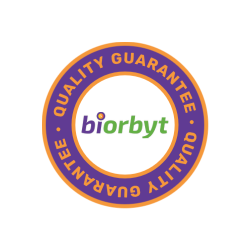You have no items in your shopping cart.
Cart summary

Human Neurotrophin-4 (rHuNT-4 )
Catalog Number: orb1495027
| Catalog Number | orb1495027 |
|---|---|
| Category | Proteins |
| Description | Neurotrophin-4 (NT-4), also known as NT-5, is a member of the NGF family of neuronal and epithelial growth factors. Neurotrophins have six conserved cysteine residues that are involved in the formation of three disulfide bonds. Human NT-4 shares 48 - 52% aa sequence identity with human beta-NGF, BDNF, and NT-3. It shares 91% and 95% aa sequence identity with mouse and rat NT-4/5, respectively. The mature protein is secreted as a homodimer and can also form heterodimers with BDNF or NT-3. NT-4 binds and induces receptor dimerization and activation of TrkB. NT-4 promotes the development and survival of selected peripheral and CNS neurons. NT-4 induced TrkB signaling augments NMDA receptor activity and increases neuronal sensitivity to excitotoxic cell death. It also promotes the proliferation of keratinocytes and accelerates hair follicle regression during the follicular cycle. NT-4 is secreted by activated T cells and granulocytes at sites of inflammation where it contributes to tissue regeneration. |
| Form/Appearance | Sterile Filtered White lyophilized (freeze-dried) powder. |
| MW | 28 kDa, a noncovalently linked homodimer of two 14.0 kDa polypeptide monomers (260 total amino acid residues). |
| Protein Sequence | GVSETAPASRRGELAVCDAVSGWVTDRRTAVDLRGREVEVLGEVPAAGGSPLRQYFFETRCKADNAEEGGPGAGGGGCRGVDRRHWVSECKAKQSYVRALTADAQGRVGWRWIRIDTACV CTLLSRTGRA |
| Source | Escherichia coli. |
| Biological Activity | Fully biologically active when compared to standard. Determined by the dose-dependent induction of choline acetyl transferase activity in rat basal forebrain primary septal cell cultures was found to be in the range of 20-50 ng/ml, corresponding to a Specific Activity of >2 x 104 IU/mg. |
| Endotoxins | Less than 1EU/g of rHuNT-4 as determined by LAL method. |
| Storage | This lyophilized preparation is stable at 2-8°C, but should be kept at -20°C for long term storage, preferably desiccated. Upon reconstitution, the preparation is stable for up to one week at 2-8°C. For maximal stability, apportion the reconstituted preparation into working aliquots and store at -20°C to -70°C. Avoid repeated freeze/thaw cycles. |
| Buffer/Preservatives | Lyophilized from a 0.2m filtered concentrated solution in 20mM PB, pH 7.4, 150mM NaCl. |
| Note | For research use only |
| Application notes | We recommend that this vial be briefly centrifuged prior to opening to bring the contents to the bottom. Reconstitute in sterile distilled water or aqueous buffer containing 0.1% BSA to a concentration of 0.1-1.0 mg/mL. Stock solutions should be apportioned into working aliquots and stored at < -20°C. Further dilutions should be made in appropriate buffered solutions. |
| Expiration Date | 6 months from date of receipt. |
Submit a review
Filter by Rating
- 5 stars
- 4 stars
- 3 stars
- 2 stars
- 1 stars
